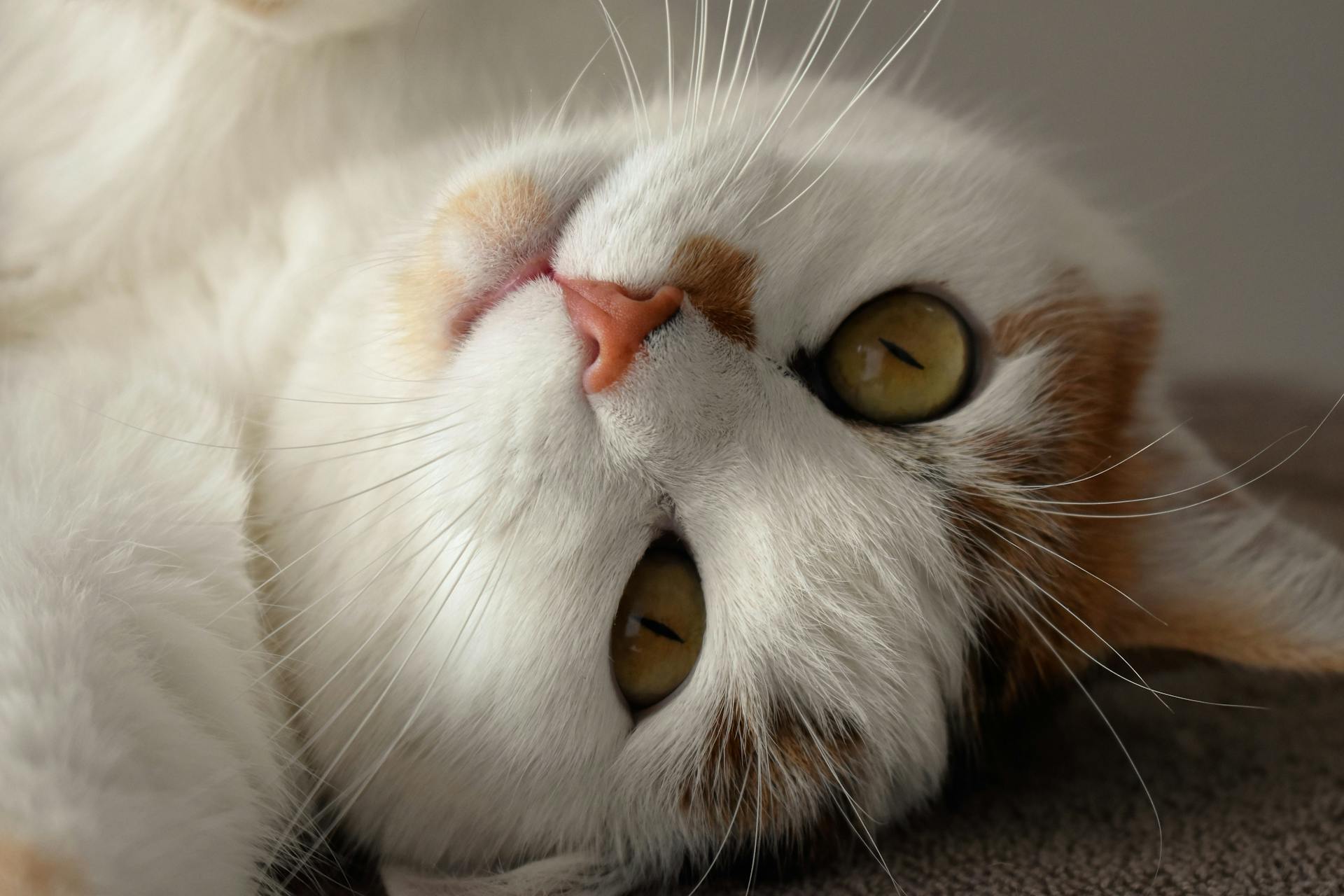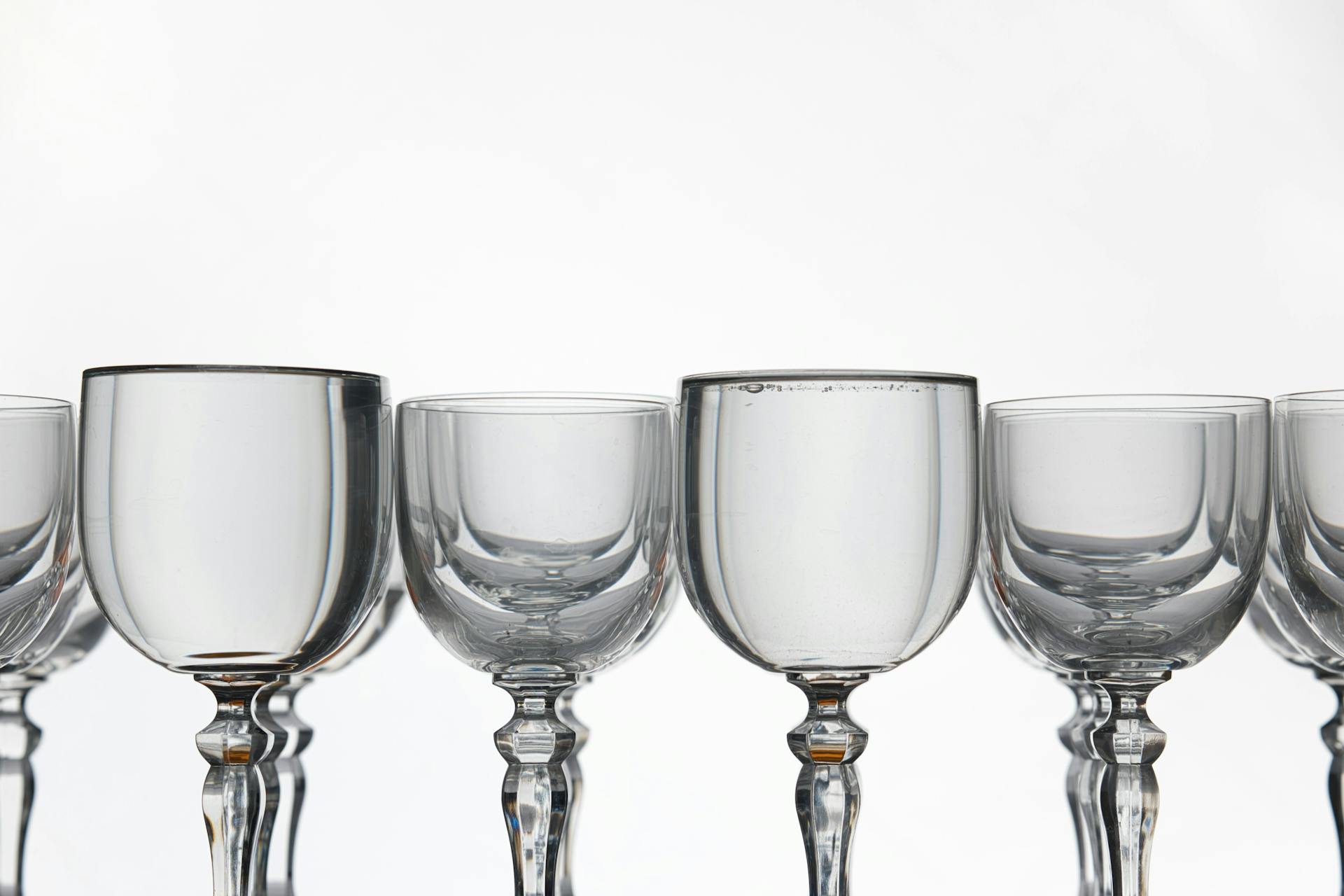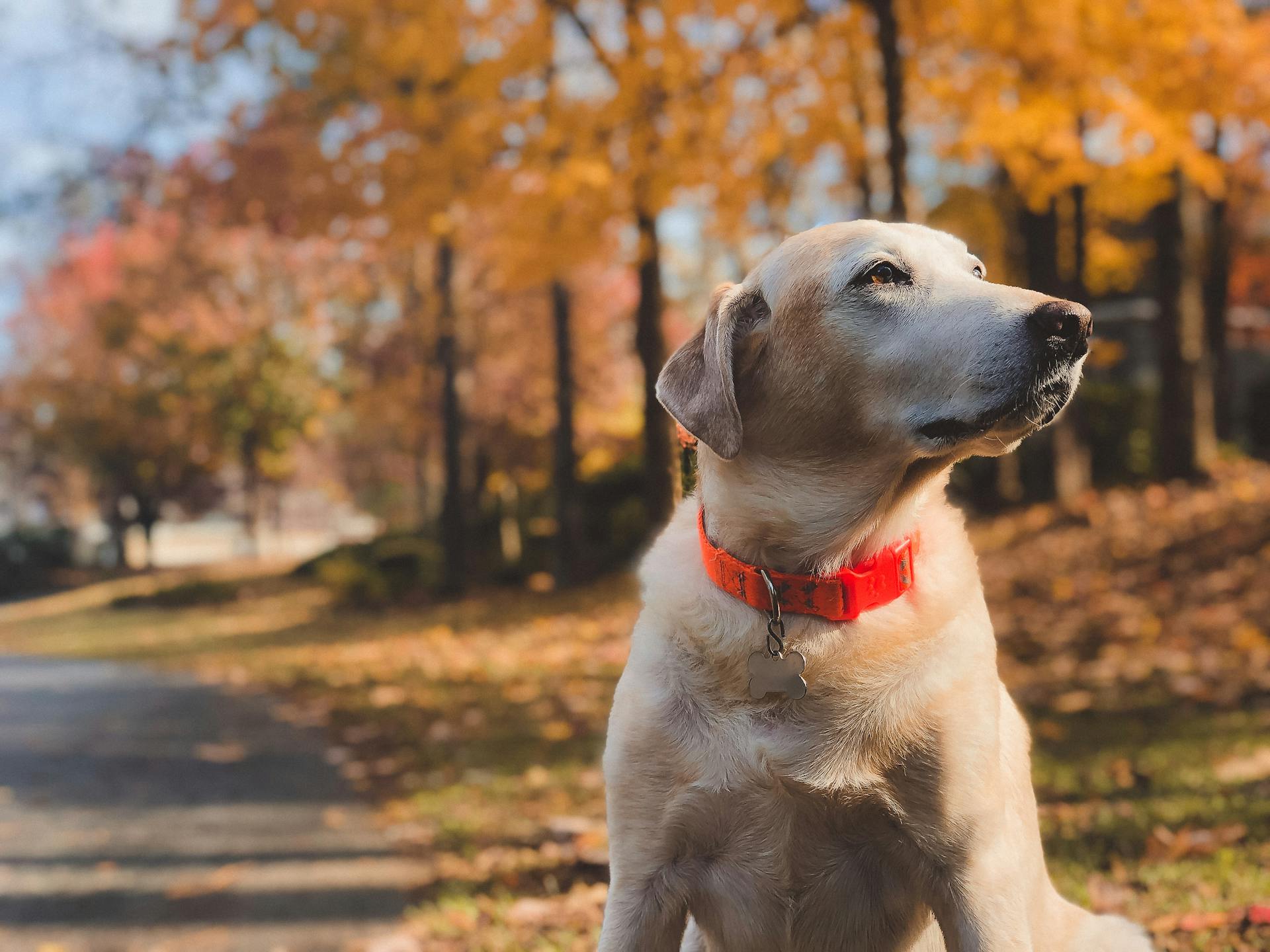
Cleaning your Labrador's ears is an essential part of their grooming and overall health. Regular ear cleaning can help prevent infections and keep your dog's ears free from dirt and wax.
Labradors are prone to ear infections due to their floppy ears, which can trap moisture and create a perfect environment for bacteria to grow. Ear infections can be painful and uncomfortable for your dog.
To start, you'll need to gather a few simple supplies, including a dog ear cleaning solution, a cotton ball, and a towel. The American Kennel Club recommends using a solution specifically designed for dogs to avoid any potential irritation.
Preparation and Inspection
To start cleaning your Labrador's ears, you'll need to gather the right materials. A vet-recommended ear cleaning solution is a must-have.
Before you begin, it's essential to have some treats on hand for positive reinforcement. This will help keep your dog calm and focused during the process.
Avoid using cotton swabs as they can damage the ear canal. They're not worth the risk, even if they seem like a convenient option.
Inspect your Labrador's ears for signs of infection or irritation, such as redness, swelling, or an unusual odor. If you notice any of these symptoms, it's best to consult a veterinarian before proceeding.
Cleaning Process
Cleaning a Labrador's ears is a crucial part of their grooming routine.
First, you'll need to prepare a cotton ball or pad to gently wipe out the accessible part of the ear and the ear flap.
Never insert anything deep into the ear canal, as this can cause harm to your furry friend.
Use a gentle touch when cleaning the ear area to avoid irritating your Labrador's sensitive skin.
Benefits and Risks
Regular ear cleaning is crucial for preventing ear infections, a common issue in Labradors due to their ear structure. A healthy ear means a happier and more comfortable dog.
If you neglect ear cleaning in Labradors, it can lead to wax buildup, ear infections, and even hearing loss. Regular cleaning is crucial in preventing these issues and ensuring your dog's ears remain healthy.
Maintaining ear hygiene is a vital part of caring for your Labrador Retriever, and regular ear cleaning can help prevent ear infections and other related problems, ensuring your Lab enjoys a good quality of life.
Benefits of Regular
Regular ear cleaning is a must for Labradors, as it prevents ear infections, a common issue due to their ear structure. This routine also reduces the risk of parasites like ear mites.
Clean ears not only keep your dog healthy but also allow for early detection of any abnormalities, enabling prompt treatment. A healthy ear means a happier and more comfortable dog.
Regular ear cleaning, coupled with routine veterinary check-ups, can help prevent ear infections and other related problems, ensuring your Lab enjoys a good quality of life. Patience and consistency are key when it comes to ear cleaning.
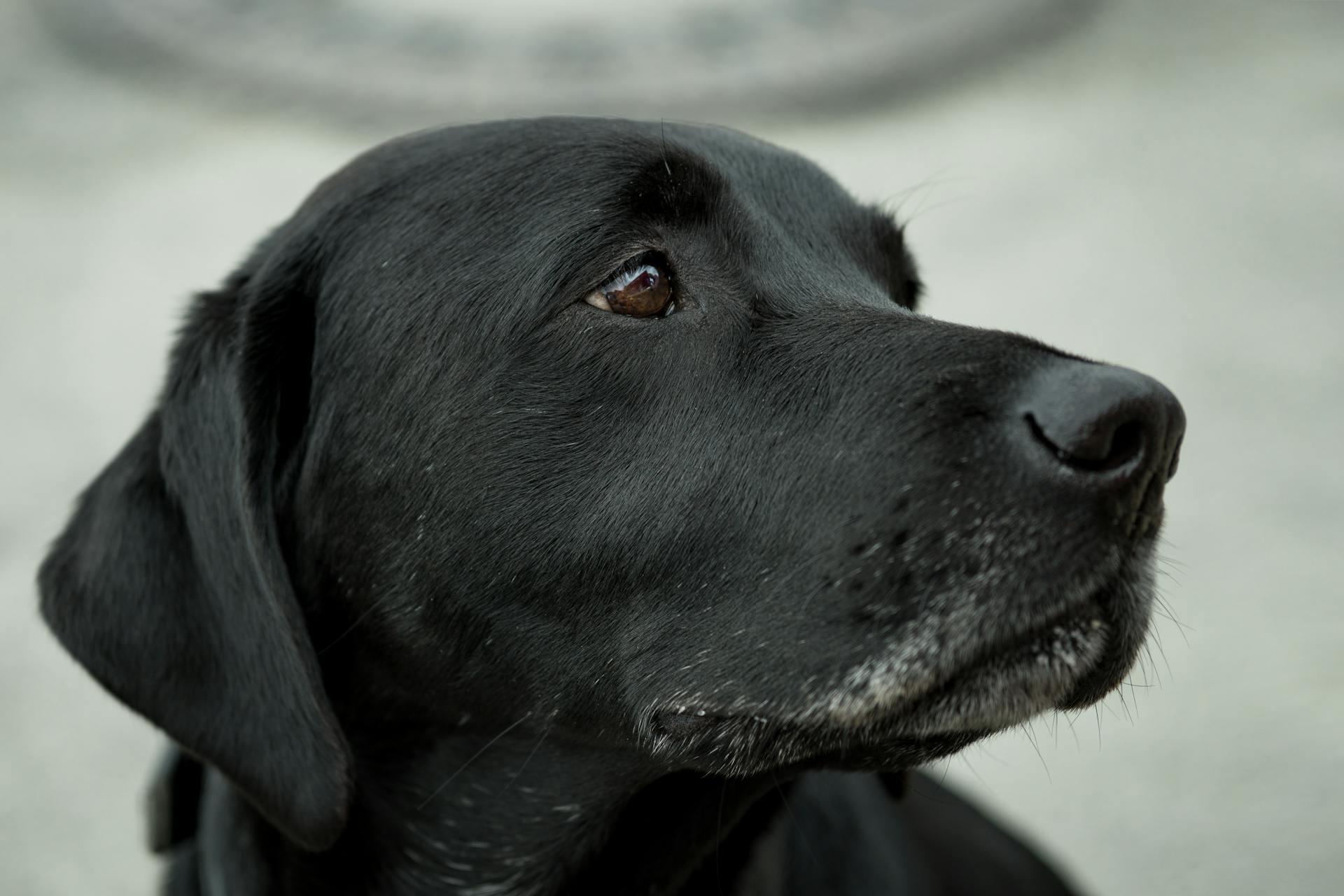
Here's a simple ear cleaning schedule to follow:
- Clean your dog's ears once every 1-2 weeks
- Any time your dog gets wet, their ears get cleaned
Some dogs need more frequent cleaning, once a week or more, due to excess discharge. Routine cleaning is necessary because their ear canals make a right angle, making it harder for debris to escape.
If you notice discharge or an odor when examining your dog's ear, it's time to clean them. Your veterinarian can help you decide how often your dog's ears should be cleaned.
Explore further: Can I Clean My Dog's Ears with Alcohol?
Labrador Infection Symptoms
Labradors can be prone to ear infections, which can be painful and uncomfortable for them. Regular ear cleaning is crucial in preventing these issues.
Signs of an ear infection in Labradors include redness, swelling, discharge, a bad odor, excessive scratching, and head shaking. These symptoms can indicate a problem that needs to be addressed.
Some common signs of ear infection include:
- Red inflamed ear canal
- Carrying one ear lower than the other
- Head shaking
- Scratching at their ears
- Rubbing their ears on things
- Crying when you rub their ears
- Foul odors
- Lots of visible discharge
If you notice any of these symptoms, it's essential to consult a veterinarian for proper diagnosis and treatment.
Positive Experience for Labrador
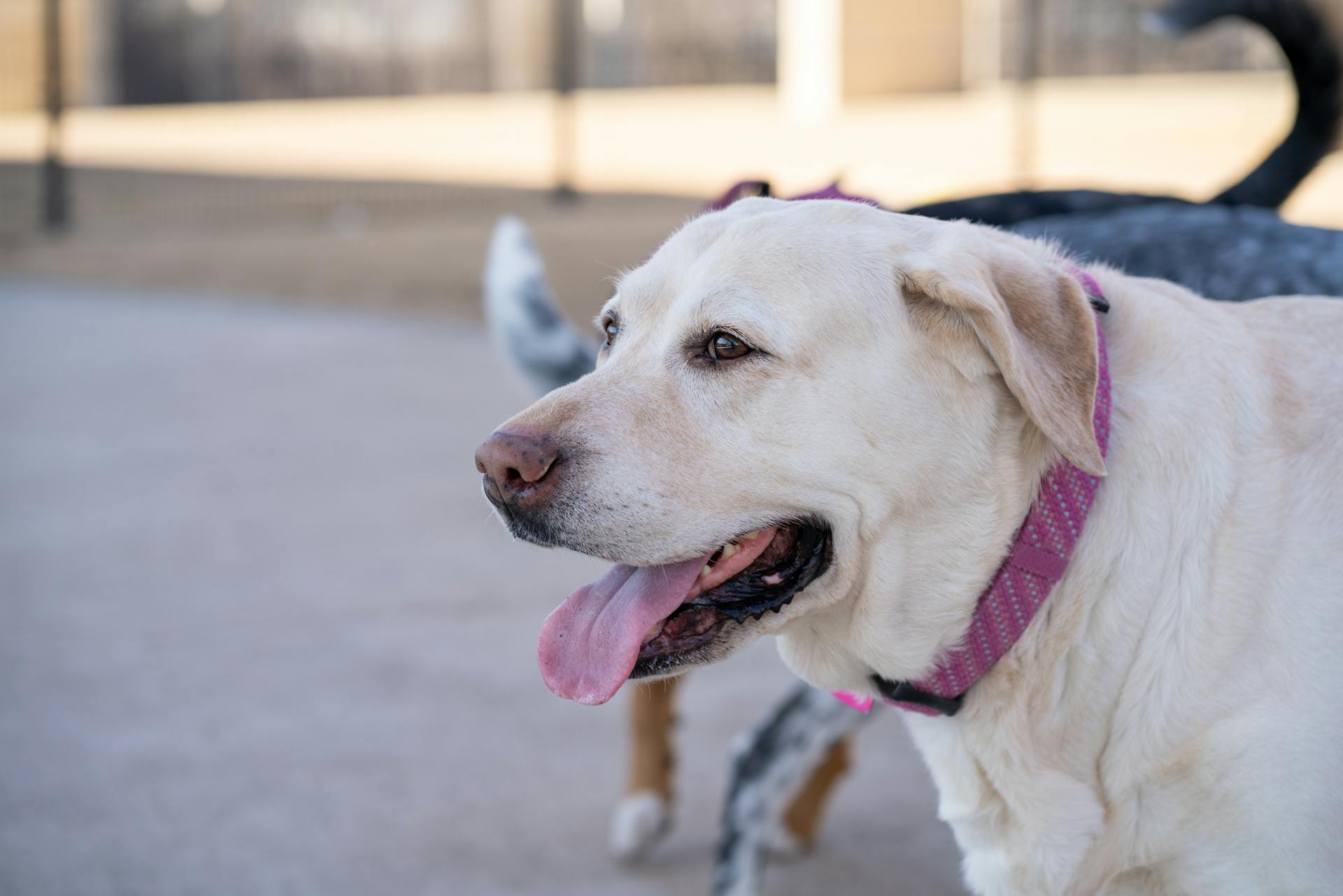
Creating a positive experience for your Labrador during ear cleaning is crucial for their comfort and well-being. Use treats and praise to create a positive association.
To start, gently familiarize your dog with ear handling, making it a gradual and enjoyable process. Use treats and praise during the cleaning process to create positive associations.
Be calm and patient, as a relaxed atmosphere will help your dog feel more at ease. Reward your Labrador afterward with their favorite treat or playtime.
Cleaning your Labrador's ears after exercise can be a good time, as they're more relaxed. Use this opportunity to make the experience as positive as possible.
If your dog continues to resist, consult a professional trainer or your vet for guidance. Forcing the cleaning can cause stress and harm.
Consistency and positive reinforcement will help your dog become more comfortable with ear cleaning over time.
Safety and Precautions
It's essential to take safety precautions when cleaning your Labrador's ears. Q-tips or cotton swabs are not safe to use and can push debris further into the ear canal.
Using a cotton ball or pad is a safer alternative to clean the outer ear and part of the ear canal that you can easily see and reach.
To avoid causing damage, it's crucial to only clean the areas of the ear that are visible and accessible.
Q-Tip Safety
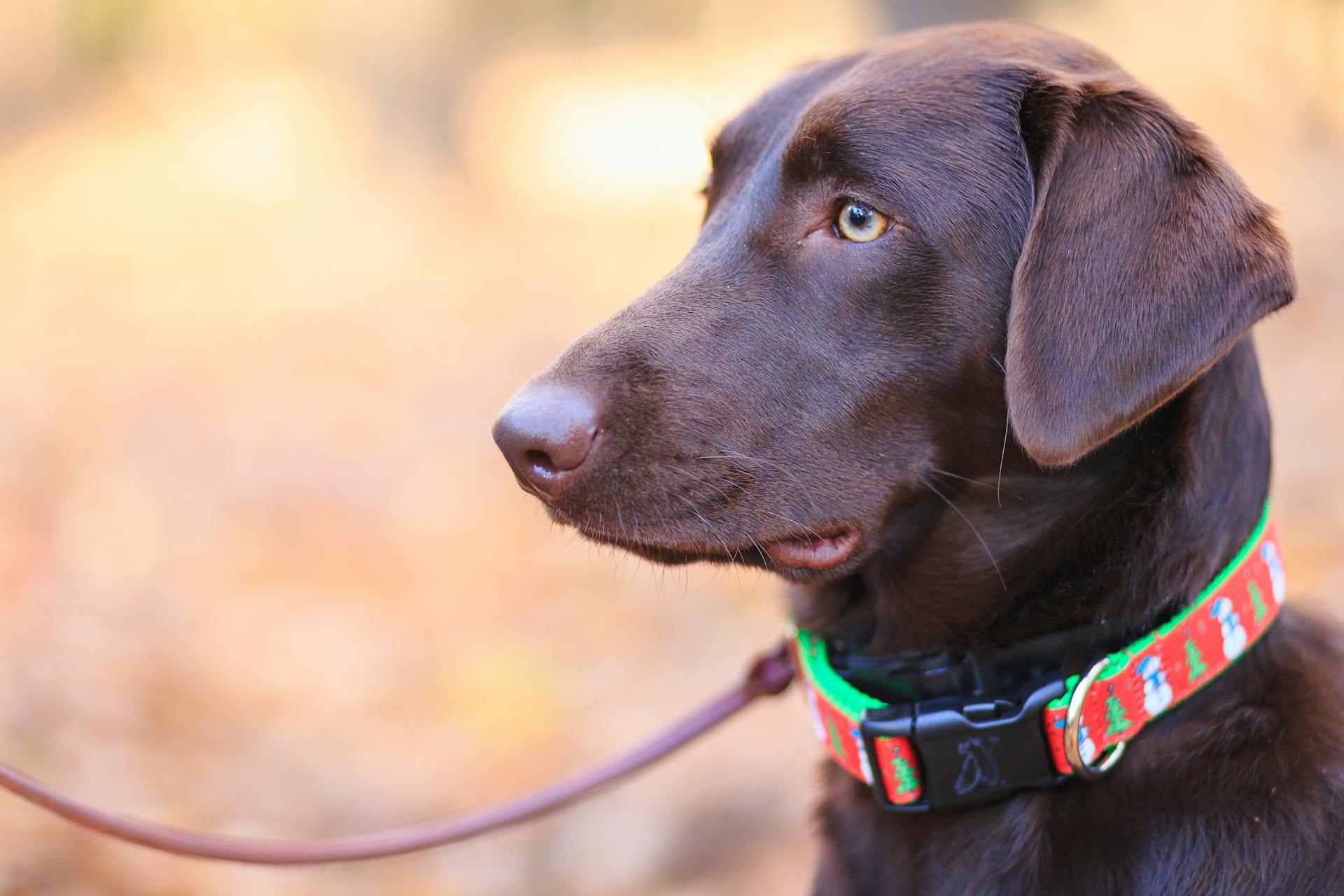
It's not safe to use Q-tips or cotton swabs in your dog's ears as they can push debris further into the ear canal and damage the sensitive inner ear structures.
Using a cotton ball or pad to gently clean the outer ear and part of the ear canal that you can easily see and reach is a much safer approach.
If you're unsure about how to properly clean your dog's ears, it's always best to consult with your vet for guidance.
They can recommend the best ear cleansing solution and provide you with the necessary instructions to keep your dog's ears healthy and infection-free.
Some dogs may require more frequent cleaning, so it's essential to observe your dog's specific needs and adjust your cleaning schedule accordingly.
Curious to learn more? Check out: Why Are My Dog's Ears Cold?
Can Cause Pain?
If your Labrador shows signs of pain during ear cleaning, it could indicate an underlying issue such as an infection. Always be gentle during the cleaning process and use a suitable ear cleaning solution to avoid any discomfort. Proper ear cleaning should not cause pain.
Infection Check
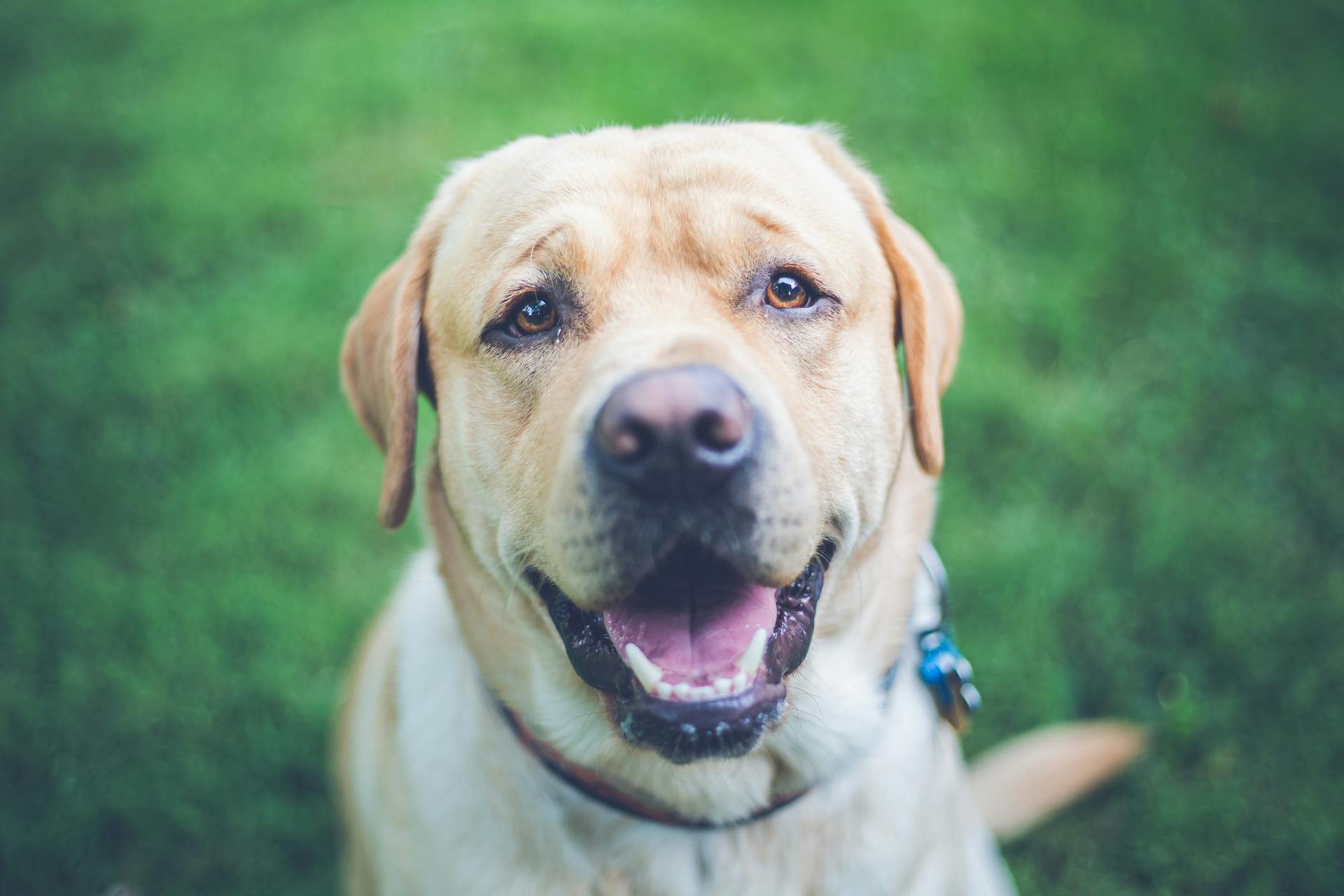
It's essential to check your dog's ears regularly for signs of infection or irritation. Once a week is a good frequency to inspect your dog's ears for redness, discharge, dirt, or waxy buildup.
You want to get to know what healthy ears look like so you can spot any changes. If there's a change in how the ears look or how your pet reacts to ear examination, it may indicate a need to investigate further.
Signs of infection include swelling or inflammation, redness or crusting of skin, off-colour discharge, foul odor, discomfort or pain when ears are touched, and itchy ears.
Here are some specific signs to watch out for:
- Swelling or inflammation (ears are hot to the touch)
- Redness or crusting of skin of the ear flap
- Off-colour discharge (yellowish or reddish-brown)
- Foul odor
- Discomfort or pain when ears are touched
- Itchy ears
Don't try to treat your dog's ears yourself, even if they've had a previous ear treatment from the vet. It's always best to consult a veterinarian if you suspect an ear infection.
Restrain My Labrador
It's essential to ensure your Labrador is calm and comfortable during ear cleaning. To achieve this, gently hold your dog's head still while lifting the ear flap.
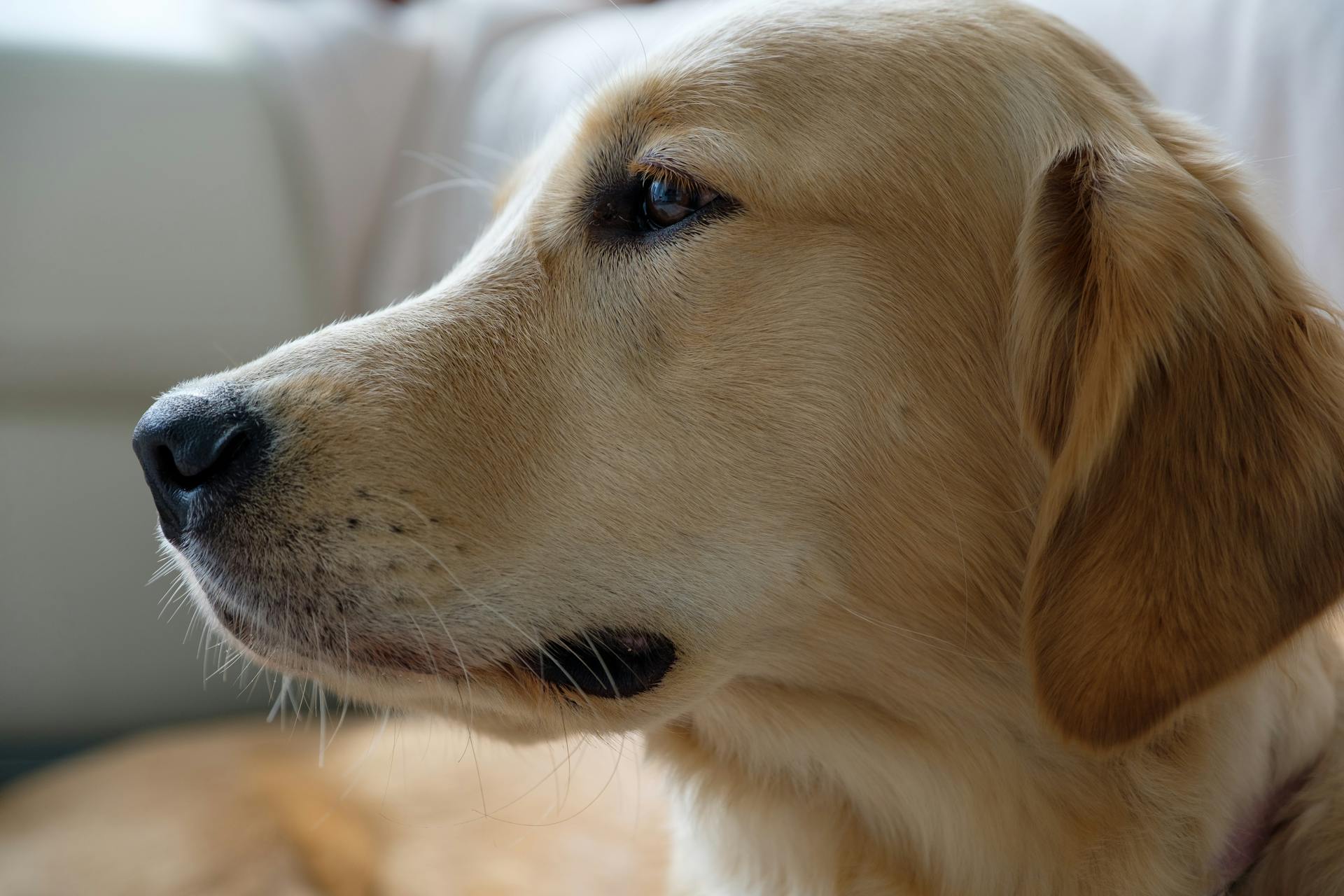
You can also try cleaning their ears after exercise when they're more relaxed. This is a good time to do it because they're naturally more calm.
Use treats and praise to create a positive association with ear cleaning. This will help your dog feel more at ease with the process.
In some cases, you might need another person to help hold your dog gently but firmly.
Tools and Technique
For cleaning your Labrador's ears, you'll need a few simple tools. A good quality ear cleaning solution is a must-have, and you can usually purchase it from your vet clinic or local pet store. Make sure to choose a solution that's safe for your dog and doesn't contain any harsh chemicals.
To clean your dog's ears, you'll also need some cotton balls or gauze. It's best to use these instead of cotton tip applicators, like Q-tips, as they can push debris further into the ear canal and cause damage. Wrap your finger in soft gauze if you don't have cotton balls handy.
Here are the basic tools you'll need:
- Ear cleaning solution
- Cotton balls or gauze
- Treats for rewarding your dog
Remember to wash your hands thoroughly before and after cleaning your dog's ears to prevent introducing bacteria or other germs into their ears.
Technique
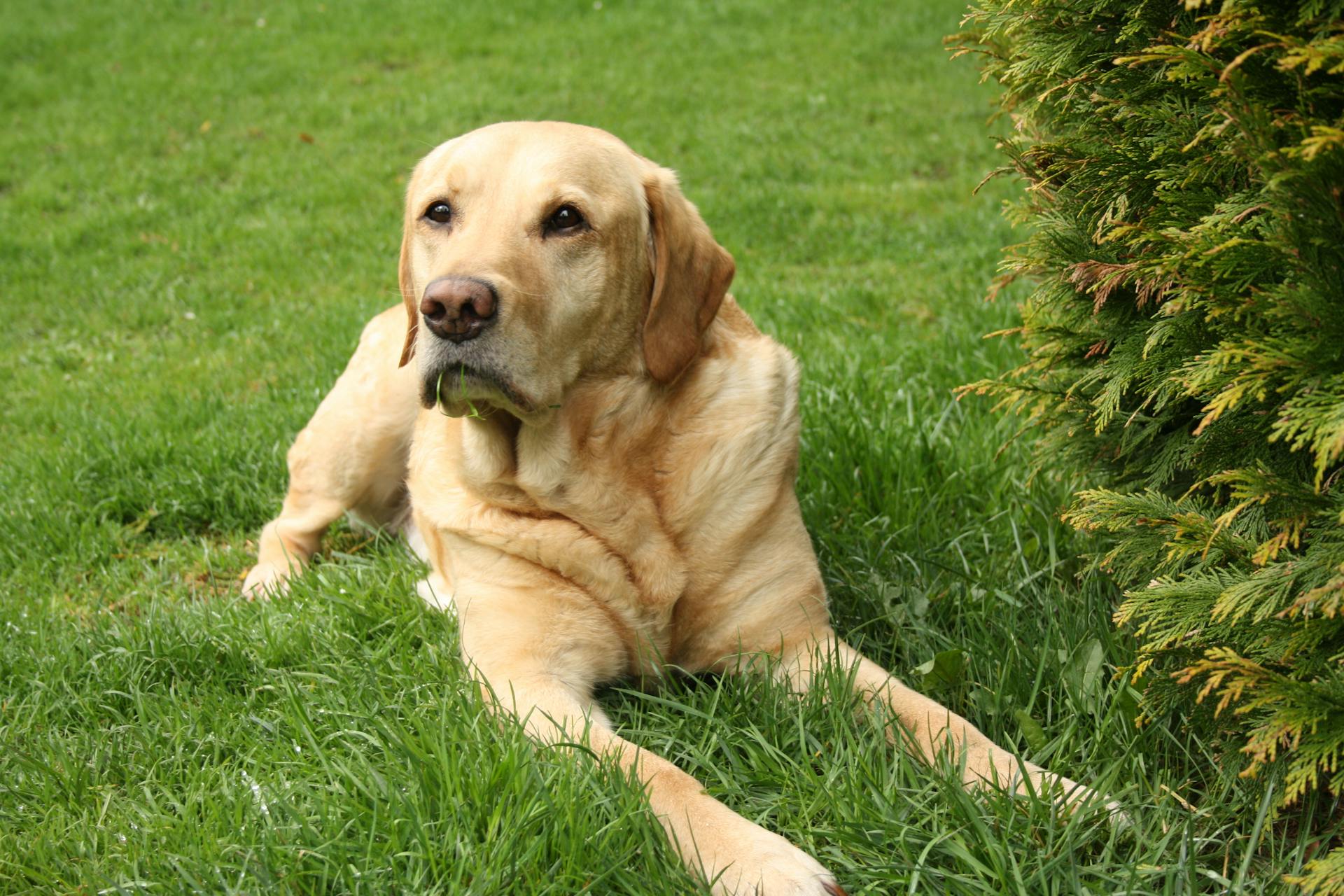
When cleaning your dog's ears, it's essential to make the experience as positive as possible. You can do this by having all your supplies close by so you aren't disrupting the flow of things during the ear clean.
There are two commonly used ear-cleaning techniques. The first method involves wetting a cotton ball or gauze with ear rinse and wiping the outer flap of the ear, including the ear folds. Use a new cotton ball or fresh gauze for the ear canal, starting outside and working your way in, as long as your pup is comfortable.
The second method is to place a small amount of ear cleaning solution in your dog's ears, massage the base of their ears, and let them shake their head to help loosen any debris inside the ear. Place a cotton ball or gauze in the ear canal to gently wipe out the inside of the ear canal.
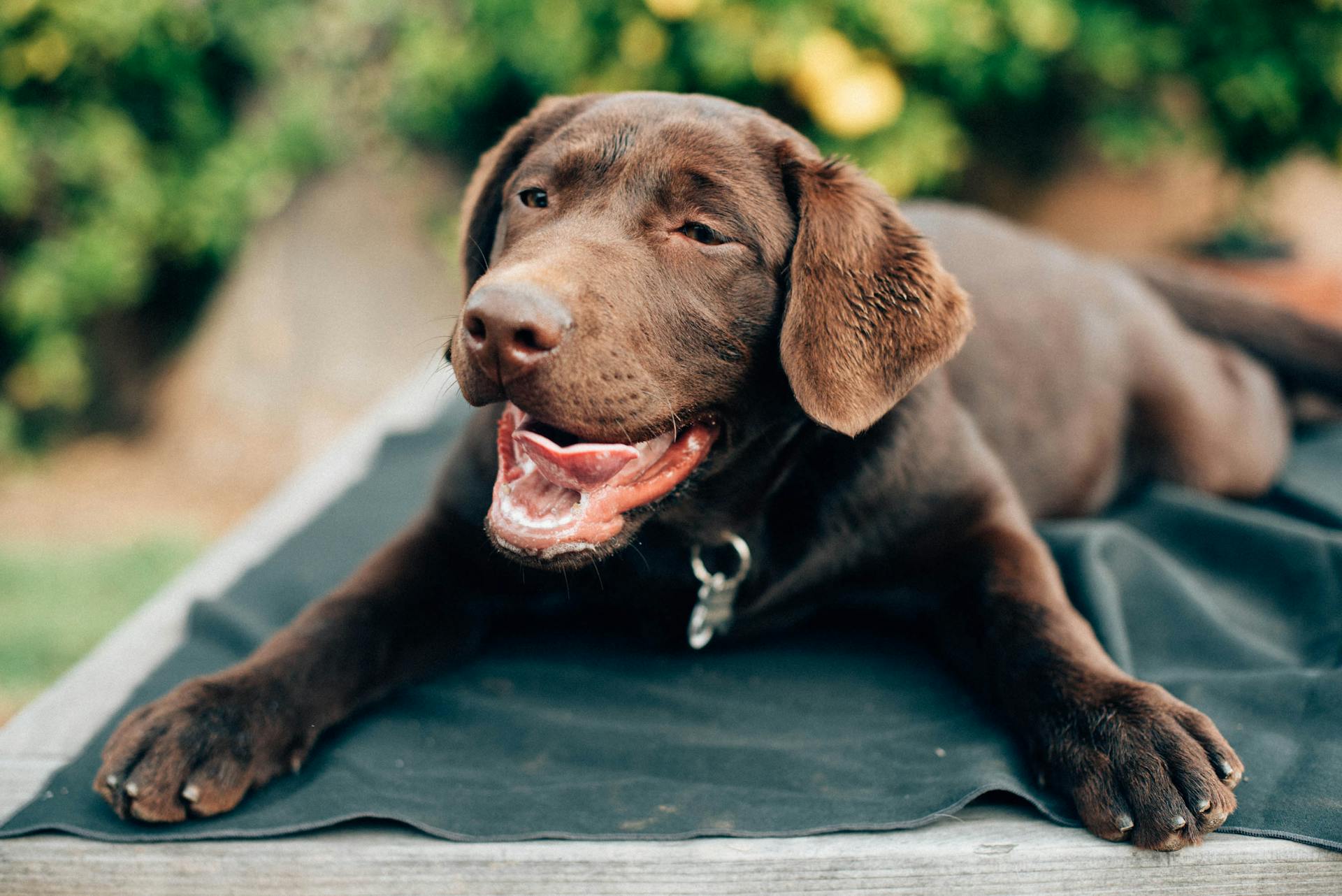
Here are the two techniques summarized:
Remember to be cautious not to cause any harm by going too deep or being too aggressive with your finger in the ear canal. It's also essential to use a fresh cotton ball or gauze each time to avoid pushing debris further into the ear canal.
Drying Options
Gently wipe your Labrador's ears with a soft, dry cotton ball or pad after cleaning to remove excess moisture.
Avoid using cotton swabs in the ear canal to prevent damaging the delicate skin inside.
For deeper drying, especially in dogs that swim often, you can use a hairdryer on a cool setting, holding it a safe distance from the ear.
Always ensure the ears are thoroughly dry to prevent moisture-related infections, which can be a real concern for dogs that love the water.
On a similar theme: Clean Dogs Ears
Frequently Asked Questions
Why does my lab have dirty ears?
Dirty ears in dogs can be caused by infections, allergies, or ear mites, which create an ideal environment for bacteria and yeast to thrive
Sources
- https://iheartdogs.com/how-to-clean-a-labs-ears/
- https://tier1vet.com/how-to-prevent-ear-infections-in-dogs/
- https://www.advancedpetcareclinic.com/services/dogs/blog/5-tips-tricks-cleaning-your-dogs-ears-home
- https://vcahospitals.com/know-your-pet/instructions-for-ear-cleaning-in-dogs
- https://www.vetdermclinic.com/dog-ear-care-carefully-clean-dogs-ears/
Featured Images: pexels.com
